
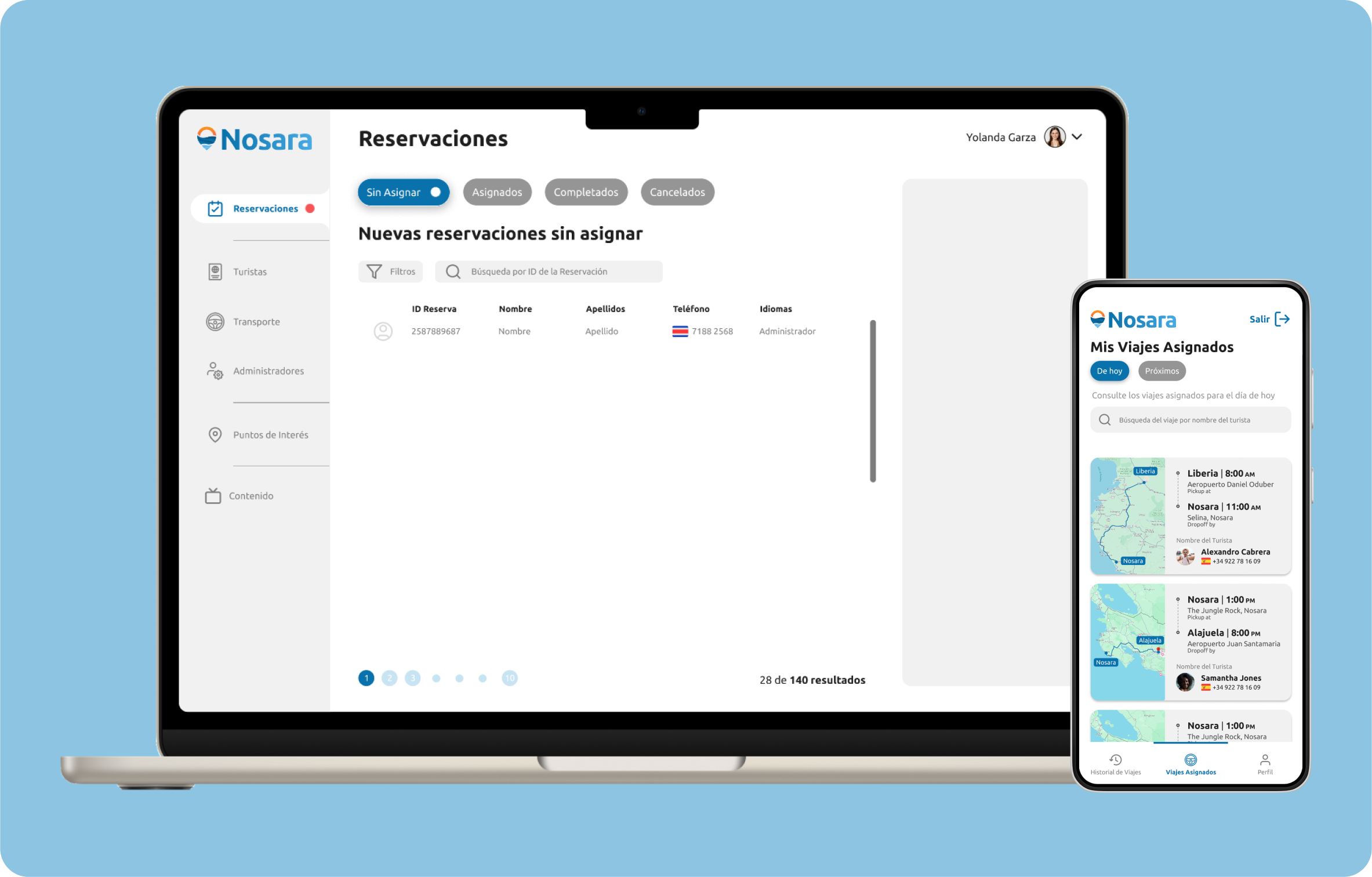
UI Designer
Driving, Management
Figma, Miro, Zoom, Teams
Carlos Mata - UX/UI Designer
Esteban Rojas - BackEnd Dev
Olman Castro - FrontEnd Dev
Bryant Barrantes - Project Manager
Thierry von der Weid and residents of Nosara, Costa Rica, created a website over 25 years ago to promote the wonders of the beach. Today, Nosara.com is a well-known brand, both nationally and internationally, and a reference for local services, including a popular shuttle transportation system for tourists.
The project was a success... until the final presentation to the client. An error in the process mapping assumed that Nosara.com managed transportation between tourists and drivers, when in fact it was done by a transportation company.
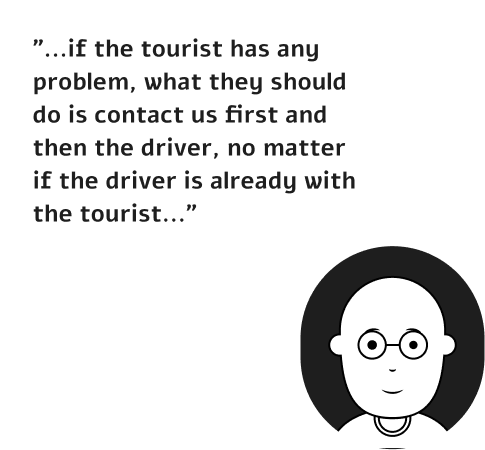
The client requested to solve the problem by allowing the platform to be managed both by the transportation company (administrator) and Nosara.com (super admin), and for the drivers to interact with both. They also requested a redesign with a more modern aesthetic.

As the lead UX/UI Designer, my task was to understand the roles of each stakeholder and how integrating the transportation business affected the workflow. We decided to conduct a Focus Group with Nosara.com and the transporters to understand their way of working and incorporate their needs into the solution.
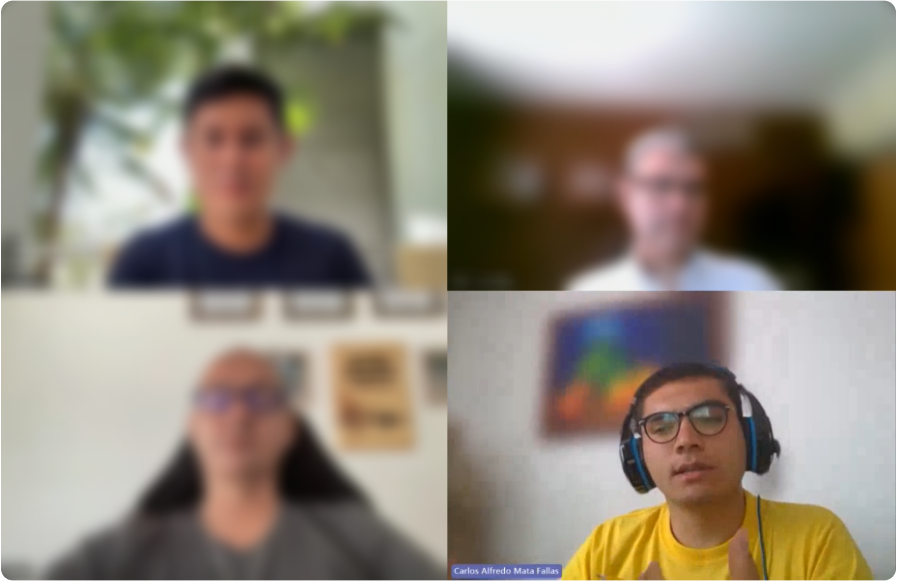
The conversation was difficult due to the differences in the way transporters work between Nosara and the Greater Metropolitan Area of Costa Rica. We created an Affinity Map with findings from the Focus Group, highlighting the lack of communication between stakeholders, the unfamiliarity with emerging and established technologies, and a clear resistance to change.
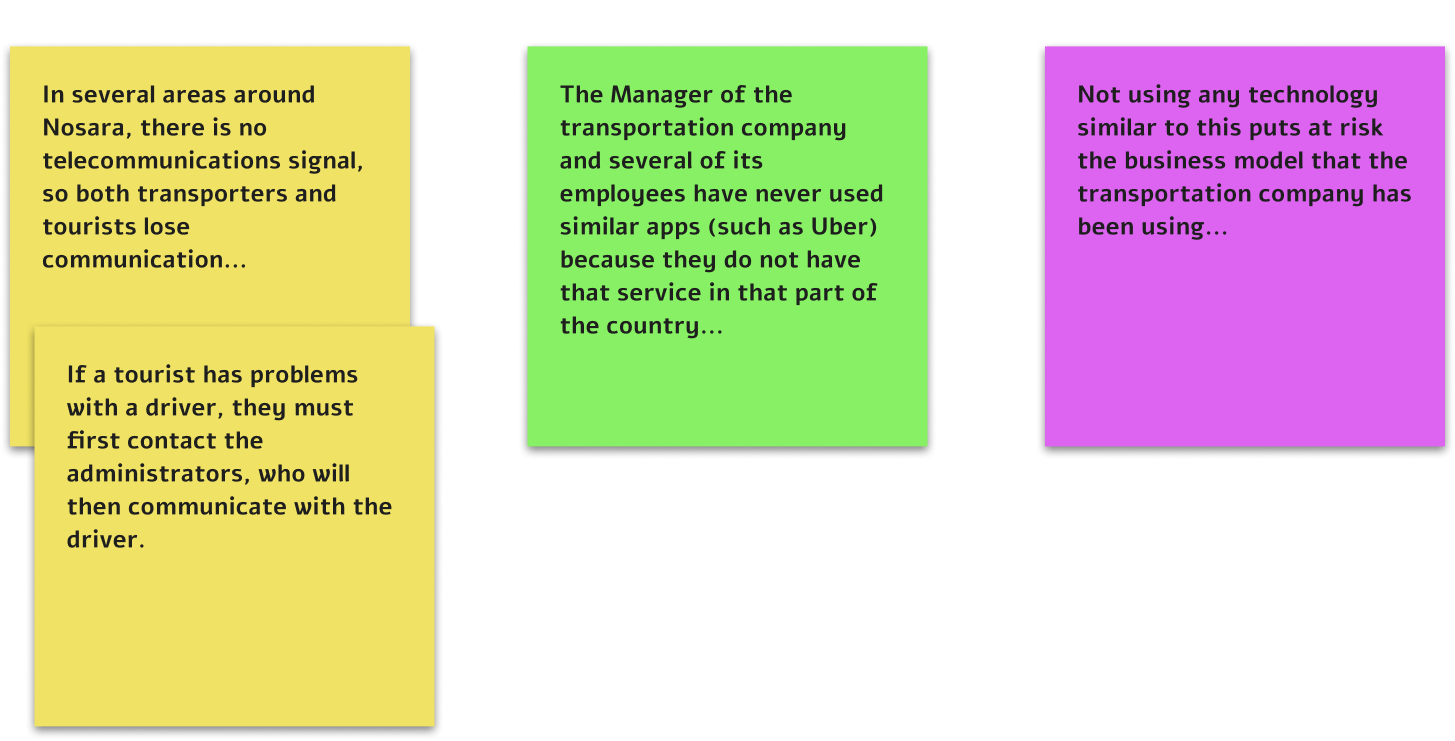
Initially, the development included three users: administrator, driver, and tourist. However, upon gathering information, we identified a fourth user: the Nosara.com administrator, in addition to the transportation company administrator, driver, and tourist.
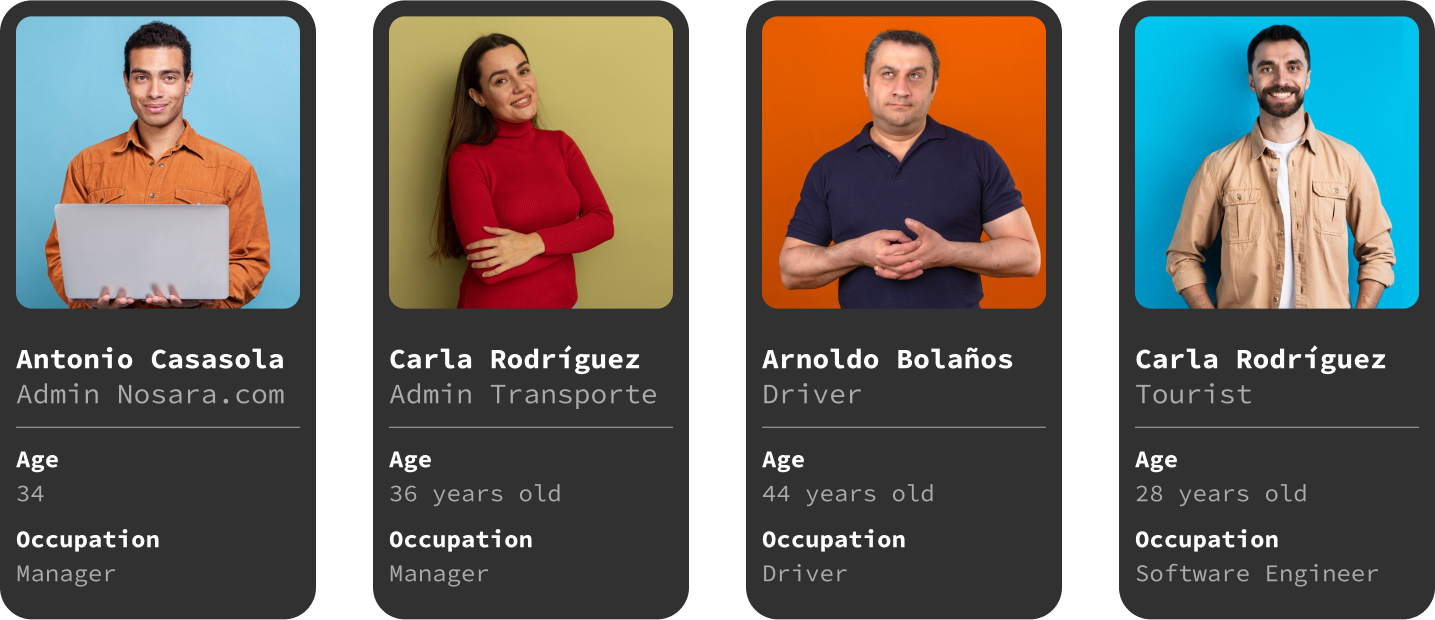
Except for the new flows resulting from the client error, all the flows had already been mapped by the developers in previous meetings. An example of a flow identified and adapted in the platform is the following:
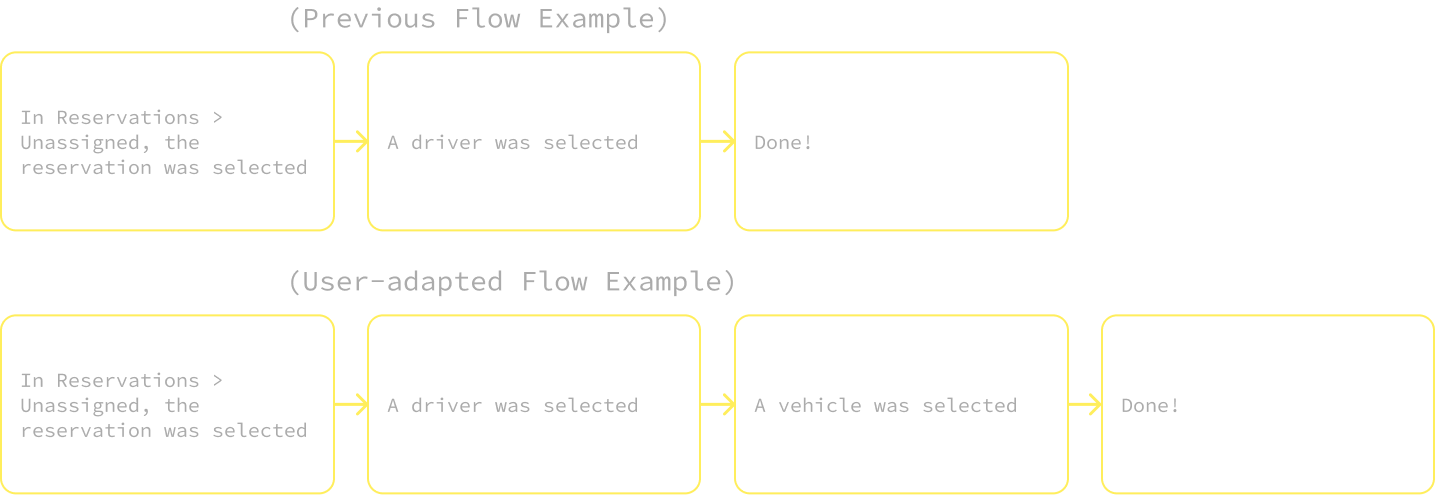
We proposed a more automated and less tedious flow, but the client preferred a more traditional approach. Allowing each driver to manage different vehicles as needed gave them greater control and improved their relationship with Nosara.com.
As I mentioned earlier, the structure and organization of the platform were carried out by the devs. When the project had to pivot due to the problem, the error was simply corrected and the structure was changed accordingly.

The architecture is based on the previous structure, worked on by the design and development team, now integrating the Nosara.com ecosystem and its allied transportation company.

%20Nosara.png)
Designed in record time, both desktop and mobile prototypes/solutions (due to the extra time taken because of the client error) resulted in an interactive solution accepted by the clients, addressing the following problems:
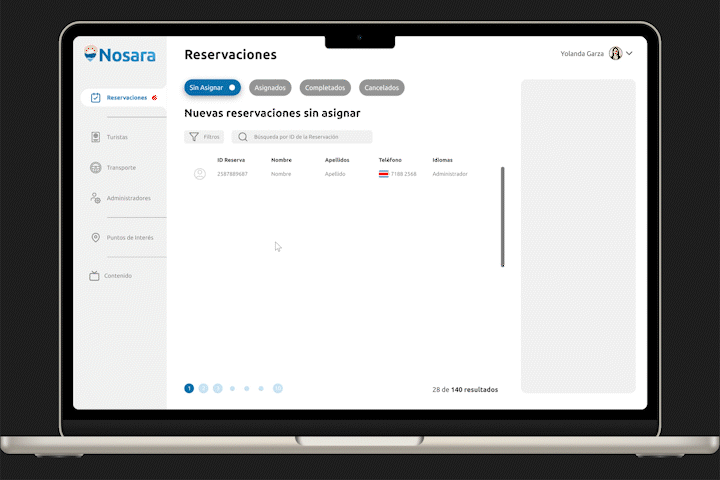
When a tourist makes a reservation through the website, the information is forwarded to the platform, alerting the Administrator of an “Unscheduled” reservation, who will then proceed to assign it.
The assignment consists of selecting the available driver and vehicle according to the tourist’s request.
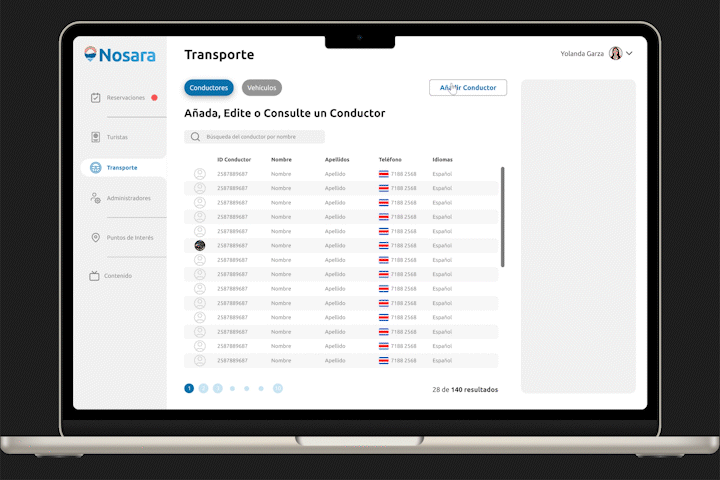
The flow shows how easy it is to enter the Drivers section, complete their profile, and have them onboard the application.
Additionally, a section was added to review their KPIs and relevant driver information.
%20-%20Nosara%20-%20Figma%202024-07-18%2023-44-58_1.gif)
Each trip will be scheduled in 2 specific sections for the driver: “Today’s Trips” and “Upcoming Trips”.
The driver can review the passenger's information, route, and other specifications before starting the trip. Once started, they can follow the trip route and/or chat with the tourist if communication is necessary.
For upcoming trips, the driver can review the information and prepare for the coming days.
Due to the error with the client, user validations with other users were not performed because the visualization of the error occurred almost at the project delivery date, cutting several stages in favor of a quick delivery on the new deadline.
Currently, the design phase of the project is completed, so it is now in the development stage (initial stage).


Because the project had little time due to the problem with the client, User Testing was not conducted and it was immediately accepted (with great approval) by the client.
From my professional point of view, user testing should still be conducted even if the delivery date is close. There was validation with the administrators, but more testing with other users could correct future problems.
The quick response from both design and development generates confidence in the company's overall development as well as with the client.
